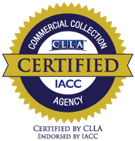
The definition of working capital, in accounting terms, is the difference between your business' current assets and current liabilities. Investors and business analysts will use this as a balance sheet measurement of overall liquidity or financial health of the company. When an organization has enough working capital, they are able to easily pay short term expenses and liabilities and maintain daily operations.
Learn how to increase working capital in 30 days. Follow these tips:
What is Working Capital?
Before we dive into ways of increasing working capital, we need to establish a better understanding of the term. On a balance sheet, current assets include cash, accounts receivable, short term investments, inventory, or any assets that can be expected to be converted or easily converted to cash within the year or operating cycle. Liabilities include any expenses that must be paid within the year or operating cycle. These short term debts include accounts payable, expenses, income taxes, or other bills.
Working Capital = Current Assets - Current Liabilities
Working capital is the cash flow a business will need from the time between spending the money on assets and investments and seeing the return of the investment.
Why is Working Capital Important?
Because analysts, angel investors, and venture capitalists will examine an organization's overall financial health, the measure of liquidity is important. Working capital is required to pay employees and vendors, as well as invest in the company, purchase basic materials to create products, and other basic costs of running a business.
If a business is investing in the creation of a product or service, and there is not enough money to pay the utility bills, for example, the business may be off to a rough start while waiting for payments on their goods and services. Therefore, a measure of working capital highlights the business' ability to manage its collection of accounts receivable as well as payments of its own debts.
How Can a Business Improve Working Capital?
Working capital can also be partly measured by days sales outstanding (DSO) or the amount of time it takes to collect on invoices. If a business wants to begin improving working capital, start by focusing on cash collections and reducing DSO.
To improve working capital and reduce DSO, improve the accounts receivable process.
- Measure current days sales outstanding to examine where improvements can be made.
- Use an invoicing, accounts receivable, or ERP system that supports a standardized workflow of business processes.
- Invoice regularly and often. Communicate with clients to verify the invoices are accurate and complete.
- Be proactive and follow up on invoices before they are due. Send a friendly reminder to pay on time.
- Build a workflow to prompt consistent and regular communication with clients so your business stays front of mind.
- Take notice of client payment behavior. If some clients aren't paying on time, this is a red flag.
- Work with a company that offers accounts receivable clean up of smaller invoices that aren't regularly being paid on time.
- Hire a debt collections agency to assist with improving cash collections of past due invoices.
The way to increase working capital is increase assets and decrease liabilities. A decrease in days sales outstanding and increase the amount of cash collected during an operating cycle is a good indicator of the business' management of its cash flow and balance sheet. An increase in working capital can then be used to invest in the growth of the business.




